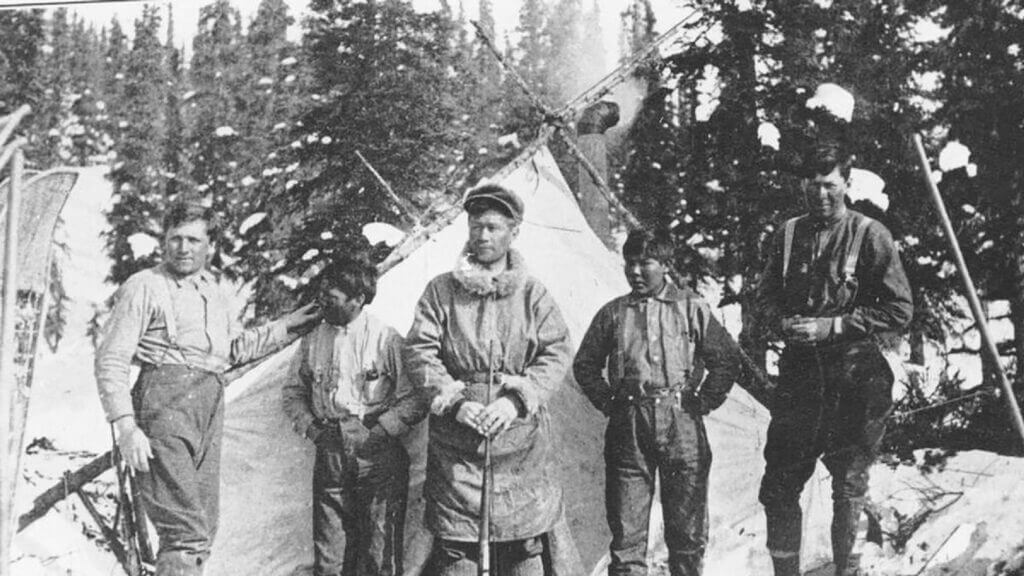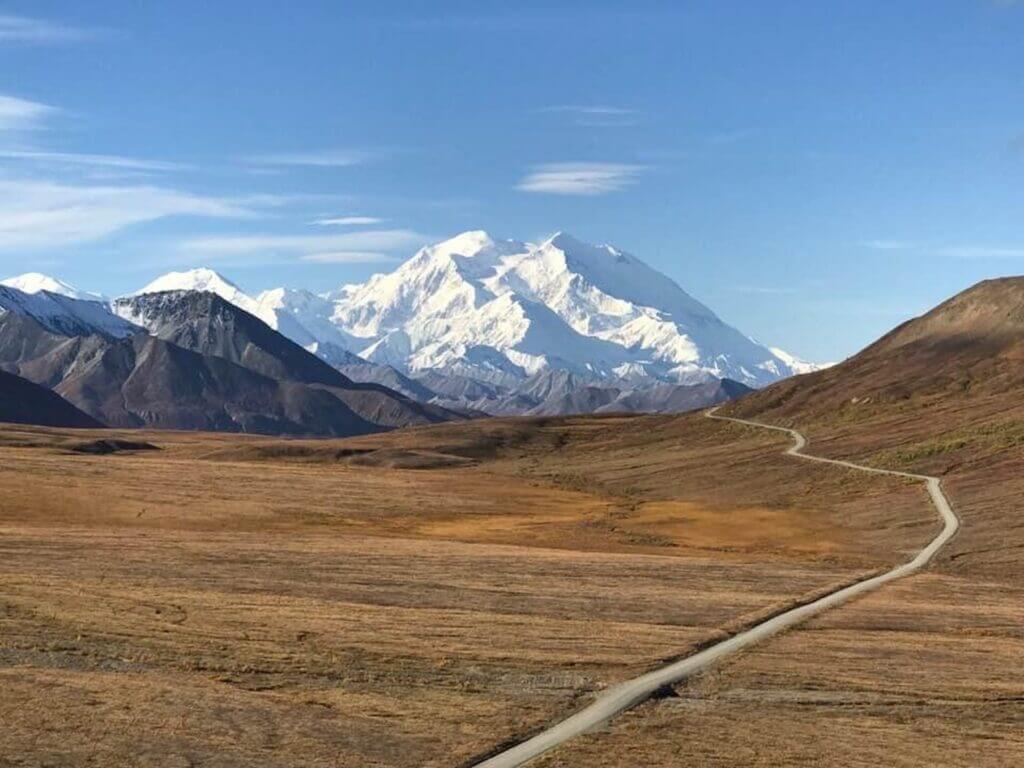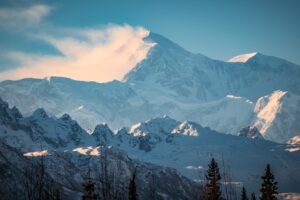About Denali
Denali is the tallest mountain in North America, and it is located in south-central Alaska and in the Alaskan mountain Range. Reaching 6,190 meters above sea level with its peak, Denali is the third-highest mountain out of the Seven Summits.
In 2015, the United States Geological Survey (USGS) used state-of-the-art equipment to measure Denali, which defined its height as 6,190 meters. However, in 2013 a report was released stating that its actual height was 6,168 meters, which disrupted the long-standing figure of 6,194 meters that had been circulating since the 1950s.
Denali or Mount Mckinley
‘Denali’ comes from Koyukon, which is a traditional Native Alaskan language, and it means “the tall one”. The name had already been used for several generations, including by researchers and naturalists. However, in 1896, there was a prospector called William A. Dickey. He started calling Denali ‘Mount McKinley in honour of William McKinley, a presidential candidate at that time. In 1917, after McKinley had become president before being assassinated, Congress officially recognised the name. This was even though McKinley himself had never even visited Alaska. Also that year, the Park in which the mountain resides was officially established as Mount McKinley National Park on February 26.
Native Alaskans, including locals of various backgrounds, continued to call the mountain “Denali”. This caused a movement in 1975 where the aim was to rename the mountain to its original name, Denali. Unfortunately, this appeal was overpassed by politicians in Ohio, where McKinley was from. However, in 2015, President Barack Obama, with Secretary of Interior, Sally Jewell, changed its name back to Denali, which remains its official name today.
The First Ascent
Hudson Stuck, Walter Harper, Harry Karstens, and Robert Tatum achieved Denali’s first ascent. In 1913, the group ascended 20,320 feet through the Karstens Ridge-Muldrow Glacier through Denali’s south summit.

Through the West Buttress, a route was led by Bradford Washburn in 1951. Later, Art Davidson, Dave Johnston, and Ray Genet made the first winter ascent through the West Buttress route in 1967.
Through the West Rib in 1959, Peter Sinclair, Jake Breitenbach, Barry Corbet, and Bill Buckingham made their first ascent. The first solo ascent via this route was in 1977 by Rupert Kammerlander. And the first winter ascent was in 1983.
The Cassin Ridge route its first solo ascent in 1976 by Charlie Porter, reaching its summit in 36 hours. Jonathan Waterman, Roger Mear, and Mike Young in 1983 accomplished the first winter ascent. Finally, a group of climbers named “The Immortal Mugs Stump” reached the summit in just 15 hours in 1991. It is still considered the strongest climb via that route since its first ascent.
During its 2012 season, Denali welcomed over 1,200 climbers attempting to reach the summit. Out of those 1,200, 498 reached the top.
Since 1903, Denali has had a historical summit rate of 52%, and the climbing rates didn’t peak until 1976. This was when Denali had more than 500 visitors in one calendar season for the first time. Ever since, 1979 has the record for the highest summit rate, 79%. Conversely, the year with the lowest summit rate was 1987, with the rating being just 31%.
What the Journey of a Climb would look like
Most Denali climbers (over 90%) choose to climb the West Buttress route. This is because it is considered the least technical way to reach the summit. The Muldrow Glacier, which is on the north side of the mountain, is similar in terms of technical difficulty and length.
However, it requires much more commitment and involvement when beginning the climb. First, you must hike in rather than fly to the nearest base camp. The following most visited route is the West Rib; however, it only sees a small number of parties per year.
Speaking in technical terms, West Rib is seen as more complex and has a higher level of danger when compared to West Buttress. Besides the three most popular routes, the remaining routes are considered much more technical, require more commitment and hold a higher difficulty level.
Denali’s normal climbing season lasts from late April until mid-July. However, the most popular times are between mid-May to late June.
Overview of Denali National Park
Upon arrival at Denali, you will find Riley Creek Campground, the Alaska Railroad station, the Denali Visitor Center, and the Murie Science and Learning Center. These are all significant factors and an integral part of Denali’s National Park.

The park entrance, where Denali Park Road meets Alaska Highway 3, is located on the Park’s eastern end. Once entered, you will find Denali Park Road, which is 92 miles long and runs from east to west. The road is scenic, starting in a low, forested area. However, it rises and falls through mountain passes on its journey to the west.
Denali’s Park is home to the only dog sledge team in the US, which is used to patrol the Park. Visitors are permitted to meet the canine rangers by visiting the kennels open all year and close to the park entrance.
Origin of Denali National Park and Preserve
Over a century ago, two men spent the entire winter in a cabin close to the Toklat River. Their experiences with the wild landscape made them concoct an idea. It was centred around preserving it so it could be enjoyed in the future. This led to the creation of the world’s first national Park for wildlife preservation.
Charles Sheldon, an early conservationist and hunter from Vermont, and Harry Karstens, a known outdoorsman and dog musher, came up with the idea. This was during their long winter stay at the cabin. The idea was to turn the place into a national landscape while its wildlife remained intact.
By 1917, after nearly ten years of dedication, Sheldon and others who shared his beliefs managed to lead Congress toward the creation of Mount McKinley National Park. And four years later, in 1921, Karstens was hired as its first superintendent.

